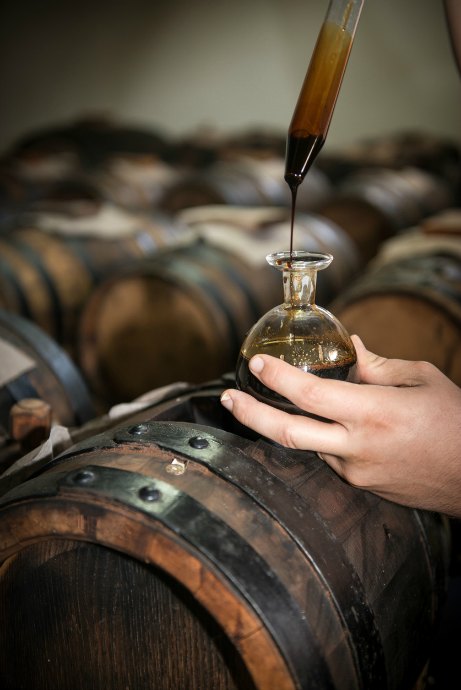Cooking With Vinegar: Vinegar Varieties
Posted by Julie on Mar 15th 2018
Vinegar is one of those secret ingredients that can transform a dish. Just as a sprinkle of salt can help accentuate the sweetness of a dessert, vinegar can bring out flavors and even alter colors and textures. But like salt, use vinegar sparingly to avoid overpowering a dish.

Learn how to use the acidity of vinegar to brighten soups, sauces, dressings, and more. This versatile ingredient may become your secret weapon in the kitchen.
Cooking With Vinegar: White Vinegar
While most people don't think white vinegar is particularly tasty, you can use it for both cooking and cleaning. Because it has a high acetic acid content, white vinegar has an "aggressive" taste, according to Bon Appetit. However, it doesn't compete with other flavors, unlike citrus or vinegars like red wine or balsamic. That makes white vinegar an ideal way to add zing to a dish, such as soup or stew, without altering the flavor profile. It's also perfect for making homemade pickles.
Cooking With Vinegar: Balsamic Vinegar
On the other end of the vinegar spectrum, in nearly every way, is balsamic vinegar. Although balsamic vinegar comes from grapes, it's not a wine vinegar. Instead, grape must -- grape juice, plus stems and seeds and skins -- is cooked, reduced, and aged in barrels for 10 to 50 years or more.

Most of the balsamic vinegars on the grocery store shelf are not true balsamic vinegar. Instead, they are wine vinegars with color added. The best balsamic vinegars have a Protected Designation of Origin (DOP) and no ingredients other than grape must. However, you can find good balsamic vinegar at the grocery store; look for the Protected Geographical Indication (IGP) seal, which certifies the vinegar was produced and bottled in Modena Italy.
Balsamic vinegar is perfect for salad dressings, soups and stews, and in marinades. It also complements strawberries and can be used for maceration.
Cooking With Vinegar: Red Wine Vinegar
Red wine vinegar comes from red wine. Like balsamic vinegar, it's also aged, but for less than two years. The longer red wine vinegar ages, the more subtle its flavor becomes. However, it still has quite a sharp flavor that's delicious in salad dressings and marinades. Red wine vinegar is an ideal way to add both brightness and flavor to a dish.
Cooking With Vinegar: Apple Cider Vinegar

Apple cider vinegar is more than an unproven dietary supplement or an all-natural way to condition your hair. It's made from fermented apple cider, but it can be a good substitute for red wine vinegar in a pinch. Serious Eats suggests using it in place of white vinegar for pickling, or adding it to sauces and roasted root vegetables.
Cooking With Vinegar: White Wine Vinegar
White wine vinegar comes from white wine. The flavor of white wine vinegar is more subtle than that of red wine vinegar, and it's also lower in acetic acid. Use white wine vinegar in dressings, sauces, and marinades where you want a milder flavor. It's also a good choice when you want to preserve the flavor profile of the other ingredients.
Cooking With Vinegar: Rice Vinegar
Rice vinegar (also called rice wine vinegar) is even milder than white wine vinegar. It comes from rice wine and has a delicate flavor that goes well with Asian cooking. While it can be used in dressings and marinades, rice vinegar really shines in stir fry and dipping sauces. In short, if you're cooking any sort of Asian fare, be sure to have rice vinegar handy.
 Free shipping over $49
Free shipping over $49










